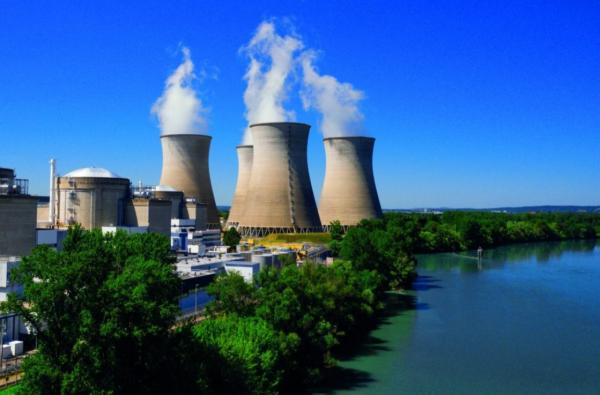Franco Swiss Negotiations on the use of the Rhone’s water
4 Sep 2023 by The Water Diplomat

The Rhône River, which originates in the Swiss Alps upstream of Lake Leman (colloquially: Lake Geneva), has again become the subject of negotiations between Switzerland and France against the background of recent drought and water shortages in France. Importantly, the water of the Rhône is used to cool 14 of the 56 nuclear reactors providing France with electrical power.
In July this year, Électricité de France (EDF) announced a reduction in electricity production at two nuclear power plants as the high temperature of the river water set in earlier than is usual in the summer months. The water is used to cool the 3.6 GW Bugey and the 2.6 GW Saint Alban nuclear power, and EDF announced in mid-July that the hot weather was likely to halve the available power supply. The water is used to cool the reactors, and the water is returned to the river at higher temperatures, but the temperature increase needs to be limited in order to avoid damage to wildlife in the waters. The maximum river temperature for the operation of the Bugey plant is 26 °C, while that at the St. Alban plans is 28°C.
In March, an audit report highlighted issues related to the safety of French nuclear power plants as a result of the increased variability in river flow and temperature caused by climate change. The report states that the French nuclear fleet, which currently comprises 56 reactors located in 18 power plants, will be faced with challenges posed by climate change. At the same time, the ageing fleet will need to be replaced in a managed transition over the coming decades.
In March, a study by the French water agency warned that as a result of climate change, the level of the Rhone River could be lowered by up to 20% over the next three decades, and in certain tributaries such as the Isère and the Drôme, the reduction could amount to between 30% and 40%. Currently the summer demand on the Rhone does not exceed 15%. Nevertheless, in the medium term, it is envisaged that the Rhone is no longer going to be an inexhaustible resource. More importantly perhaps in the short term, the legal limits placed on the temperature of the water used to cool the nuclear reactors at the point of release into the river will force reduction in power production. Additionally, at the river mouth, the progressive ingress of salt water upstream in dry months could cause damage to crops and riparian vegetation.
Under pressure from France to open discussions, Switzerland announced that it was prepared to enter into negotiations on a Franco-Swiss treaty on the joint management of the Rhône. A primary concern is to set up consultations in response to the crossing of defined limits in the flow of the river. Both Countries are already parties to the Convention on the Protection and Use of Transboundary Watercourses and International Lakes of the United Nations Economic Commission for Europe (UNECE), otherwise known as the Helsinki Convention. This framework convention nevertheless requires more detailed river basin agreements to be negotiated which are specific to the local conditions.
